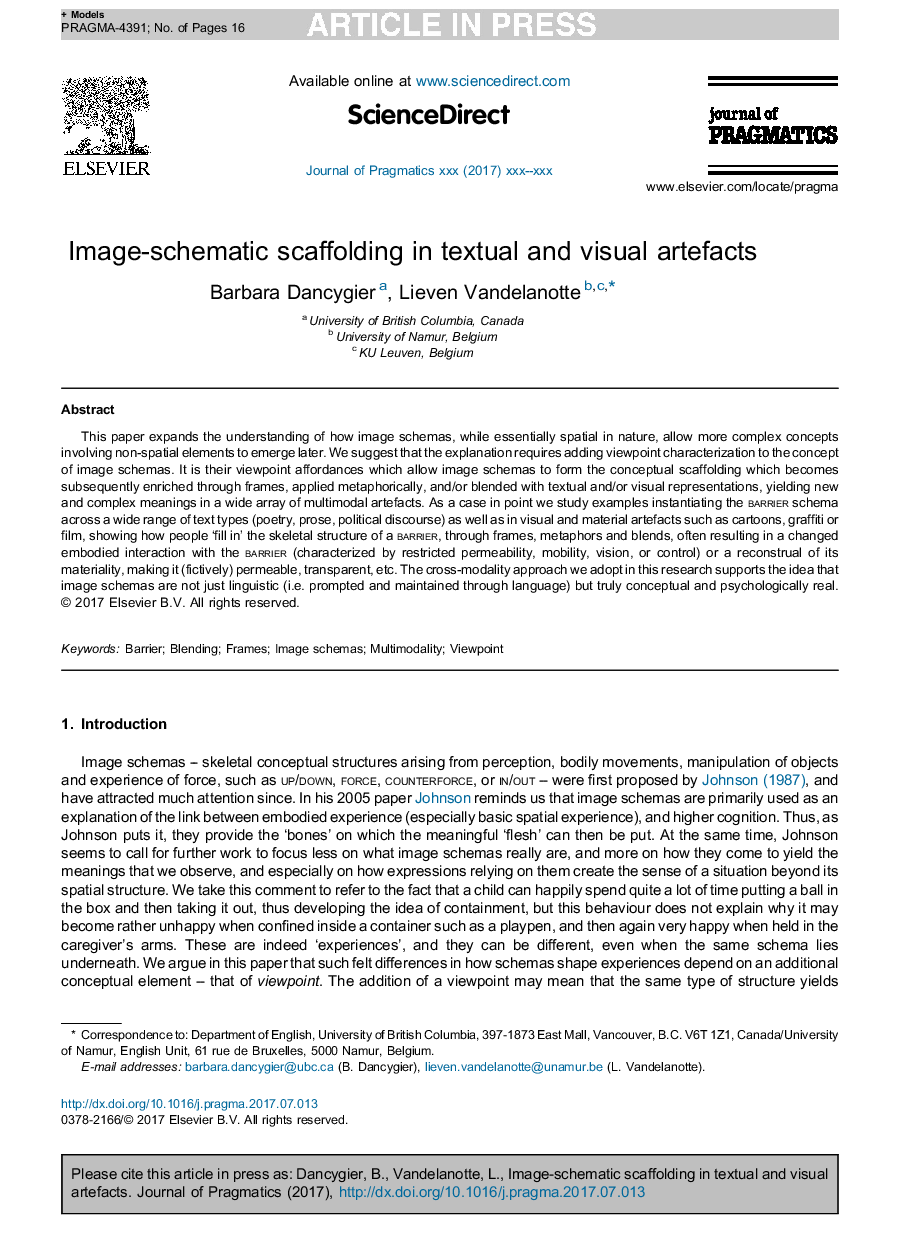| Article ID | Journal | Published Year | Pages | File Type |
|---|---|---|---|---|
| 7297738 | Journal of Pragmatics | 2017 | 16 Pages |
Abstract
This paper expands the understanding of how image schemas, while essentially spatial in nature, allow more complex concepts involving non-spatial elements to emerge later. We suggest that the explanation requires adding viewpoint characterization to the concept of image schemas. It is their viewpoint affordances which allow image schemas to form the conceptual scaffolding which becomes subsequently enriched through frames, applied metaphorically, and/or blended with textual and/or visual representations, yielding new and complex meanings in a wide array of multimodal artefacts. As a case in point we study examples instantiating the barrier schema across a wide range of text types (poetry, prose, political discourse) as well as in visual and material artefacts such as cartoons, graffiti or film, showing how people 'fill in' the skeletal structure of a barrier, through frames, metaphors and blends, often resulting in a changed embodied interaction with the barrier (characterized by restricted permeability, mobility, vision, or control) or a reconstrual of its materiality, making it (fictively) permeable, transparent, etc. The cross-modality approach we adopt in this research supports the idea that image schemas are not just linguistic (i.e. prompted and maintained through language) but truly conceptual and psychologically real.
Related Topics
Social Sciences and Humanities
Arts and Humanities
Language and Linguistics
Authors
Barbara Dancygier, Lieven Vandelanotte,
